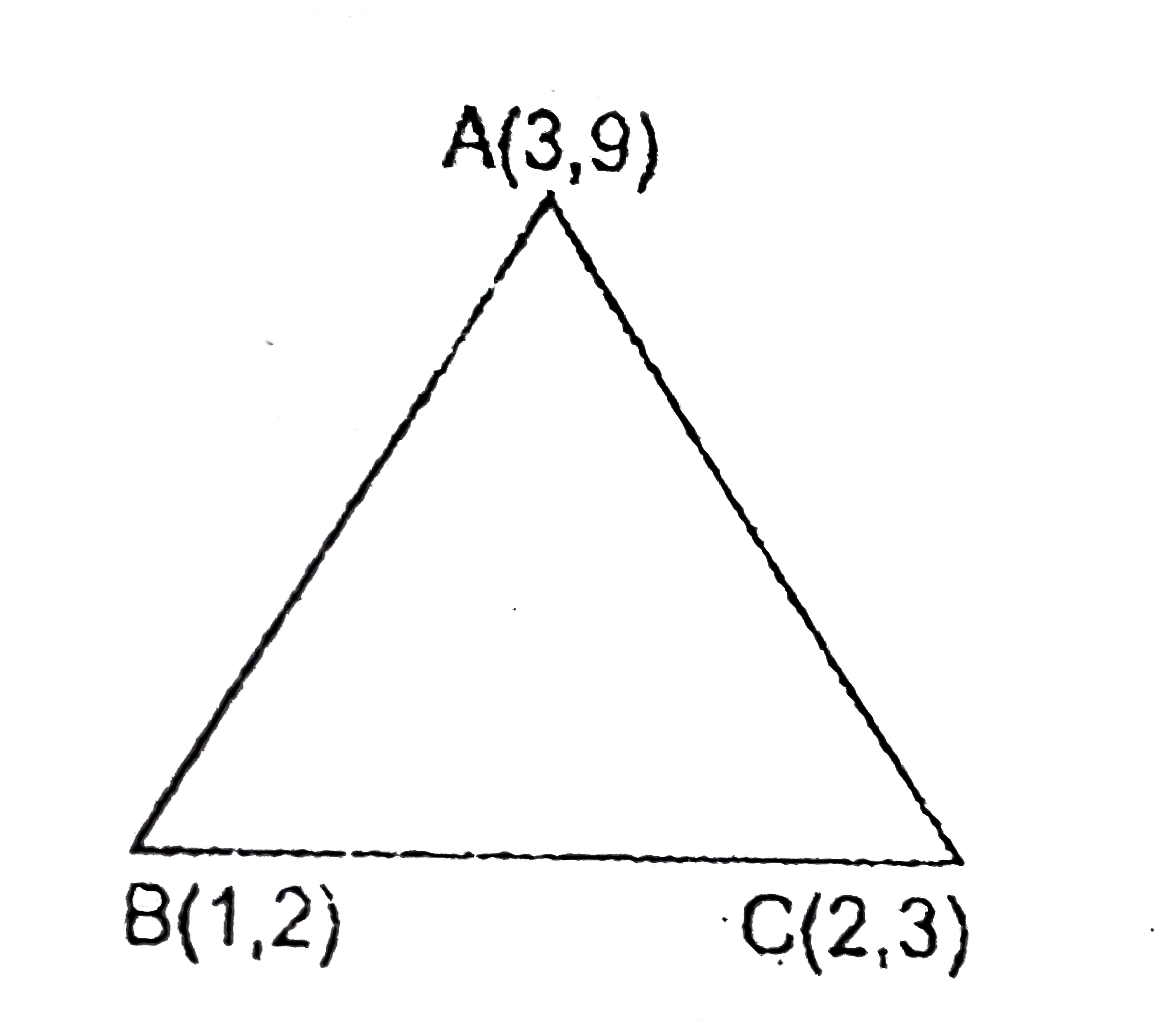In a ABC,A≡(α,β),B≡(1,2),C≡(2,3), point A lies on the line y=2x+3, where α,β are integers, and the area of the triangle is S such that [S]=2 where [ .] denotes the greatest integer function. Then the possible coordinates of A can be (−7,−11) (b) (−6,−9) (2,7) (d) (3,9)
a−b=7
a+b=5
minimum value of the quadratic expression whose zero's are a and b and leading coefficient is 4 is−49
minimum value of the quadratic expession whose zero's are a and b and leading coefficient is −1 is494
The correct Answer is:A, B, C, D
Slope of AC=9−33−2=6 
Equation of AC isy−3=6(x−2)
⇒6x−y=9
But we have equation of AC is ax+by=9
⇒a=6,b=−1⇒a+b=5
Topper's Solved these Questions
Similar Questions
In a ABC,A≡(α,β),B≡(1,2),C≡(2,3), point A lies on the line y=2x+3, where α,β are integers, and the area of the triangle is S such that [S]=2 where [ .] denotes the greatest integer function. Then the possible coordinates of A can be (a)(−7,−11) (b) (−6,−9) (c)(2,7) (d) (3,9)
View SolutionIn a ΔABC,A≡(α,β),B≡(1,2),C≡(2,3) and point A lies on the line y = 2 x + 3 where α,β∈l. If the area of ΔABC be such that [Δ]=2, where [.] denotes the greatest integer function, find all possible coordinates of A.
View Solution
Knowledge Check
- Question 1 - Select One
Let a, b, c ∈ R and α,β are the real roots of the equation ax2 + bx + c = 0 and if a + b + c < 0, a – b + c < 0 and c > 0 then [α]+[β] is equal to (where [.] denotes the greatest integer function.)
A0B1C−1DNone
if α is a real root of 2x3−3x2+6x+6=0, then find [α] where [] denotes the greatest integer function.
View SolutionIn a triangle ABC,A=(α,β)B=(2,3),andC=(1,3). Point A lies on line y=2x+3, where α∈I. The area of ABC, , is such that [Δ]=5 . The possible coordinates of A are (where [.] represents greatest integer function). (a)(2,3) (b) (5,13) (−5,−7) (d) (−3,−5)
View SolutionThe period of the function f(x)=(6x+7)+cosπx−6x, where [.] denotes the greatest integer function is: 3 (b) 2π (c) 2 (d) none of these
View SolutionIn a ΔABC,A=(h,7),B=(1,2),C=(2,3) If the area of ΔABC be such that [Δ]=2 , (where [.] denotes the greatest inteher function ),find h.
View Solution(lim)x−−−−→−1−31x[−1x]= (where [.] denotes the greatest integer function) a. -9 b. -12 c. -6 d. 0
View SolutionThe number of points where f(x)=[sinx+cosx] (where [.] denotes the greatest integer function) x∈(0,2π) is not continuous is (A) 3 (B) 4 (C) 5 (D) 6
View Solutionf(x)=x3−9x2+24x+c has real roots α,β,γ then find the value of [α]+[β]+[γ]. Where[] represents greatest integer function
View Solution

